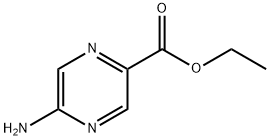Is the Grade 200 pvc tube used for the radon system? Please give the answer first, and explain the reason, and explain what are the specifications of the pipeline used in the radon system? Are there any alternative materials for radon pipes? What are the advantages of using a grade 200 PVC over using other materials?
Is Class 200 PVC pipe used for radon systems?
Related Products More >
-
- 9002-86-2
- CNY equest For Quotation
-
- CNY equest For Quotation
-
- 9002-86-2
- equest For Quotation
-
- 2022-01-7
- equest For Quotation
- 25KG/Bag
-
- 2022-01-7
- equest For Quotation
- 25kgs two layers draft paper bag or 1000kgs PP bag
-
- 12767-90-7
- equest For Quotation
-
- 115-86-6
- equest For Quotation
-
- equest For Quotation
- 25kg bag



 沪ICP备2021018848号-5
沪ICP备2021018848号-5

Can Schedule 20 PVC Be Used in Radon Systems
Yes, But with Caveats: Schedule 20 PVC can be used as it meets the basic requirements for containing and venting radon gas. However, it's not as strong as Schedule 40. If the radon system is in an area where it's unlikely to be subjected to physical stress or damage, and cost is a significant factor, Schedule 20 might be considered.
Specifications of Pipes Used in Radon Systems
Pipe Diameter: A 3-inch pipe is the minimum, but 4-inch is better, especially for passive mitigation systems.
Pipe Support: Vertically, the vent should be supported every 8 feet; horizontally, every 6 feet.
Slope: The pipe should have a proper slope to drain condensate back, typically towards the source of radon entry or a suitable drainage point.
Vent Location: The pipe must vent 12 inches above the roof of the building and be at least 10 feet from any windows or skylights that can be opened. This can be disregarded if the pipe is 2 feet above the opening.
Alternative Materials for Radon Pipes
Corrugated HDPE (High-Density Polyethylene) Piping: It's flexible and highly resistant to corrosion. It can easily adapt to challenging installation environments like tight spaces or uneven terrain, offering more flexibility in system design.
ABS (Acrylonitrile Butadiene Styrene) Piping: It has good impact resistance and is suitable for use in radon systems. It is often used in applications where the pipe may be subject to physical stress.
Aluminum: It is sometimes used, but it has issues like condensation and heat transfer. Aluminum is also more difficult to seal at the joints compared to PVC, which could lead to radon leakage.
Advantages of Using PVC (in General, Not Specific to ""Grade 200"")
Durability: PVC pipes have high resistance to corrosion, abrasion, and UV radiation, ensuring long-term performance.
Cost-Effectiveness: They are generally more affordable than alternatives like copper or stainless steel, making them an economical choice.
Ease of Installation: PVC pipes are lightweight and have simple connection methods, which reduces labor costs and installation time.
Chemical Resistance: They can withstand exposure to corrosive elements like radon gas and substances commonly found in soil without degrading.
Low Maintenance: Requiring only routine inspections, PVC pipes are resistant to scaling and biological growth.
Leak-Proof Joints: When joined with solvent cement, PVC pipes create reliable, leak-proof connections"
In radon systems, pipes are typically designed to be durable, corrosion-resistant, and able to withstand the pressure and flow rates required for effective radon mitigation. Specifications may include diameter, wall thickness, length, and material composition.
Alternative materials for radon pipes include other types of plastics, such as polyethylene, as well as metals like copper or steel. Each material has its own set of advantages and disadvantages.
Grade 200 PVC, if suitable for the application, may offer advantages such as cost-effectiveness, corrosion resistance, and ease of installation. However, it's crucial to consult with local building codes and system requirements to ensure the material chosen is appropriate for radon mitigation. Ultimately, the best material for radon pipes will depend on the specific needs and constraints of the installation."
Class 200 PVC pipe is generally designed for higher pressure applications compared to lower-class pipes. However, whether it is suitable for radon systems depends on local building codes, manufacturer recommendations, and the specific requirements of the radon mitigation system.
In radon systems, pipes must be able to withstand the pressure and flow rates associated with radon gas extraction. They must also be corrosion-resistant and durable enough to last for many years. Therefore, the choice of pipe material should be based on a comprehensive assessment of these factors."